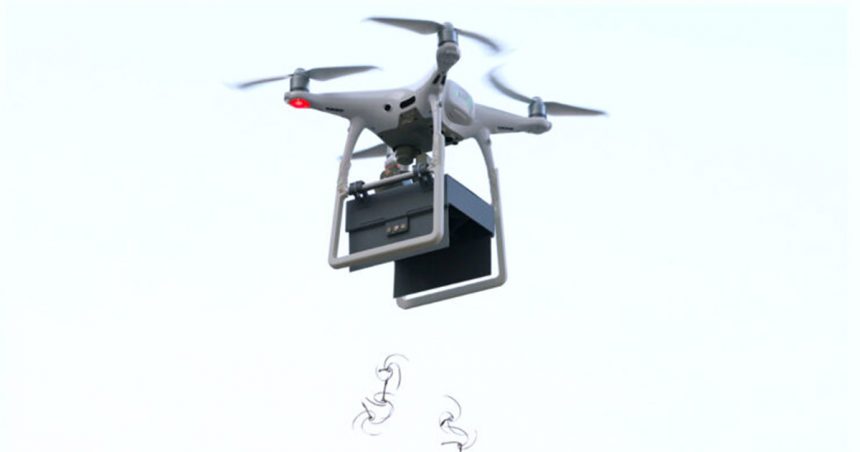Reforestation plays a crucial role in global climate strategies by restoring ecosystems and sequestering carbon. However, traditional tree-planting methods are slow and labor-intensive, unable to keep up with the urgent demands of our environmental crisis. That’s where high-tech drones come in, revolutionizing reforestation efforts to make them faster, more efficient, and scalable. This article explores how drones are transforming reforestation and highlights key players and technologies in this emerging field.
The Urgency of Advanced Reforestation Techniques
Forests worldwide are disappearing rapidly due to human activities like logging and wildfires. Restoring these forests is vital to combating climate change and protecting biodiversity, but the task is enormous and time-sensitive. Traditional tree-planting methods, relying on thousands of volunteers manually planting saplings, are inspiring but not efficient enough for the scale required.
The Emergence of Drone Seeding
Drone-seeding companies are leading the way in this technological revolution. These companies use aerial drones to spread seeds over vast areas, including remote and inaccessible locations. While early models needed skilled pilots, advancements now enable drones to operate autonomously, covering large areas more effectively. Newer drones can drop seeds along preset routes autonomously and work in swarms under human supervision.
Case Study: Mast Reforestation
Seattle-based Mast Reforestation is a pioneer in drone seeding, focusing on restoring North America’s fire-damaged conifer forests. Since its establishment in 2015, Mast has developed custom drones for large-scale reforestation projects. In 2022, they combined drone seeding with manual planting to restore 121 hectares in Oregon, projecting significant carbon removal over the next 200 years. Matthew Aghai, Mast’s VP of Research and Development, emphasizes the need for scalable tools to address massive wildfires.
Speed and Scale: AirSeed Technologies
AirSeed Technologies in Australia demonstrates the speed and scale achievable with drones. Their drones can plant seeds 25 times faster than manual methods, with a target of planting 100 million seed pods annually by 2024. Despite vast restoration potential in Australia, standard manual approaches fall short of meeting the necessary scale. AirSeed’s drones played a vital role in rejuvenating koala habitats in New South Wales post bushfires.
Global Efforts: Dendra Systems and Others
Companies like Dendra Systems and FlashForest are leveraging drone technology globally for forest restoration. Dendra Systems partners with WWF-Australia to reforest extensive areas, while FlashForest focuses on post-wildfire landscapes in North America. FlashForest’s drones plant seeds in nutrient-rich pods for early growth. Bryce Jones, founder of FlashForest, stresses the importance of sustainable practices for the future of humanity.
Overcoming Logistical Challenges
While drone technology shows promise, significant logistical hurdles remain. These include sourcing diverse seeds in large quantities and ensuring their proper storage and transportation. For instance, reforesting 10 million hectares in the U.S. West would require billions of seeds, underscoring the need for a robust seed supply chain. Charlotte Mills of AirSeed emphasizes the conservative use of seeds as a limited resource.
Enhancing Seed Germination
One of the challenges faced is the low germination rate of seeds dispersed by drones. Companies are innovating by implementing methods like simulated dormancy periods and custom seed capsules to create optimal conditions for germination. Mast Reforestation utilizes “pucks” filled with seeds and nutrients tailored to specific species’ requirements to increase the chances of successful seedling establishment.
Monitoring and Data Collection
Successful reforestation goes beyond seed dispersal; long-term monitoring is essential for growth tracking and necessary adjustments. Advanced technologies, such as GPS-tagged seed pods and AI-driven data analysis, improve monitoring efforts for higher success rates. AirSeed’s GPS-tagged seed pods allow precise location monitoring from planting to maturity.
The Future of Reforestation
The integration of drone technology in reforestation is a game-changer, offering a scalable, efficient, and cost-effective way to restore degraded landscapes worldwide. Despite challenges, ongoing innovation and collaboration among companies, governments, and NGOs can significantly boost global reforestation efforts. As Bryce Jones of FlashForest aptly states, sustainable action is crucial for the survival of the human species.






